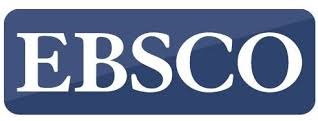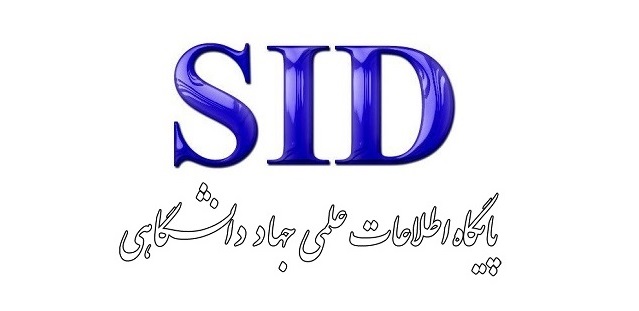Designing a Qualitative Model of Influential Factors on Brand Hearsay in the Field of International Health Tourism
Keywords:
health tourism, qualitative approach, thematic analysis, tourist communications, Brand HearsayAbstract
Today, an intensifying competition has emerged among various countries, especially developing Asian nations, to attract health tourists. Simultaneously, health tourism has been flourishing in developing countries. This trend underscores the necessity of focusing on brand hearsay as an effective marketing tool to attract health tourists. Accordingly, the present study aims to design a qualitative model of the influential factors affecting brand hearsay in the field of international health tourism. This research is a qualitative study that gathered qualitative data from a population of experts and senior professionals working in the Health Tourism Department of the Ministry of Health, Treatment and Medical Education, the National International Health Tourism Association, and the Office of Marketing and Development of Foreign Tourism of the Ministry of Cultural Heritage, Tourism, and Handicrafts. The sampling method employed in this study was purposive, and data collection continued until data saturation was reached, which occurred by the eleventh expert. In the qualitative phase, data analysis was conducted using thematic analysis and MAXQDA software. Based on the findings of the qualitative section of the research, the factors influencing brand hearsay in the domain of international health tourism can be categorized into four groups: brand hearsay components, drivers, inhibitors, and factors with a dual nature. Each of these categories is composed of distinct components and dimensions.
References
N. Hamid, J. Kachroo, and A. A. U. P. Q. J. Bhat, "An economic analysis of marketing and price spread of saffron in J&K State," Journal of Pharmacognosy and Phytochemistry, vol. 6, no. 5, pp. 1231-1239, 2017.
O. Zangeneh, M. Mahmoudzadeh, H. Hakimpour, and M. Mohammadi, "Designing a Model for Developing Attitudes Toward Iranian Brands in the Home Appliance Industry with Emphasis on National Values and Religious Beliefs.," Interdisciplinary Studies in Marketing Management, vol. 3, no. 2, pp. 141-161, 2024.
S. Cartwright, H. Liu, and C. Raddats, "Strategic use of social media within business-to-business (B2B) marketing: A systematic literature review," Industrial Marketing Management, vol. 97, pp. 35-58, 2021, doi: 10.1016/j.indmarman.2021.06.005.
K. Mehri, M. Rahimian, and B. Gardashi, "Meta-Analysis of the Relationship Between Brand Equity and Loyalty Among Iranian Athletes.," Interdisciplinary Studies in Marketing Management, vol. 3, no. 1, pp. 42-62, 2024.
C. M. Harmeling, J. W. Moffett, M. J. Arnold, and B. D. Carlson, "Toward a theory of customer engagement marketing," Journal of the Academy of Marketing Science, pp. 1-24, 2017, doi: 10.1509/jm.15.0495.
O. Bayat, "Identifying and Prioritizing Factors Affecting the Development of Food Tourism in Yazd City.," Interdisciplinary Studies in Marketing Management, vol. 2, no. 3, pp. 128-144, 2023.
M. Kubickova and D. Martin, "Exploring the relationship between government and destination competitiveness: The TALC model perspective," Tourism Management, vol. 78, p. 104040, 2020, doi: 10.1016/j.tourman.2019.104040.
S. Wei, T. Ang, and R. Liou, "Does the global vs. local scope matter? Contingencies of cause-related marketing in a developed marketJO - Journal of Business Research," vol. 108, pp. 1-2, 2020, doi: 10.1016/j.jbusres.2019.11.018.
M. Salehi and M. R. Esfidani, "Development of service brand judgment model from customers' point of view," Journal of Strategic Management Studies, vol. 14IS - 56, pp. 83-104, 2023.
T. H. Cham, Y. M. Lim, and M. Sigala, "Marketing and social influences, hospital branding, and medical tourists' behavioural intention: Before‐and after‐service consumption perspective," International Journal of Tourism Research, vol. 24, no. 1, pp. 140-157, 2022, doi: 10.1002/jtr.2489.
N. L. Tran and W. Rudolf, "Social media and destination branding in tourism: a systematic review of the literature," Sustainability, vol. 14, no. 20, p. 13528, 2022, doi: 10.3390/su142013528.
E. J. Kim, S. H. Kim, and Y. K. Lee, "The effects of brand hearsay on brand trust and brand attitudes," Journal of Hospitality Marketing & Management, vol. 28, no. 7, pp. 765-784, 2019, doi: 10.1080/19368623.2019.1567431.
S. Rasoulzadeh Eghdam, S. A. Mir Mohammad Tabar, and S. A. U. Z. Y. Ali Poor, "Opportunities and limitations of the tourism industry in Iran]," Studies of Sociology, vol. 8, no. 30, pp. 63-80, 2016.
C. A. U. S. V. T. Maru, "The relationship between electronic word of mouth and brand: A systematic review and future research agenda," International Journal of Consumer Studies, vol. 48, no. 2, p. e13017, 2024, doi: 10.1111/ijcs.13017.
M. Moharramzadeh, M. Sivan, F. Kiani, and H. Khavandi, "Examining Brand Hearsay's Role in Encouraging Customers to Choose Sports Product Brands in Ardabil.," New Approaches in Sports Management, vol. 10, no. 37, pp. 25-37, 2023.
D. Irawan, S. U. Ady, and N. Sayidah, "Building Brand Trust: The Role of AI-Driven Personalization and Brand Storytelling in Strengthening Brand Authenticity Perceptions," Journal of Economics, Management, Entrepreneurship, and Business (JEMEB), vol. 4, no. 2, pp. 83-91, 2024.
Y. Shirmohammadi and G. Aryafard, "The Effect of Information Quality from Online-to-Offline Mobile Shopping Apps on Brand Hearsay Through the Information Systems Success Model with Perceived Privacy Protection.," Human-Information Interaction, vol. 10, no. 3, pp. 58-76, 2023.
Downloads
Published
Submitted
Revised
Accepted
Issue
Section
License
Copyright (c) 2025 Delaram Sharifi Limaei, Mohammad Javad Taghipourian, Soheila Nazarpour, Ramzan Alizadeh (Author)

This work is licensed under a Creative Commons Attribution-NonCommercial 4.0 International License.







